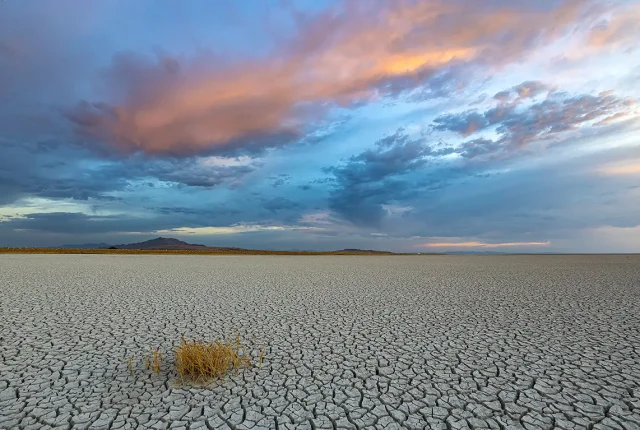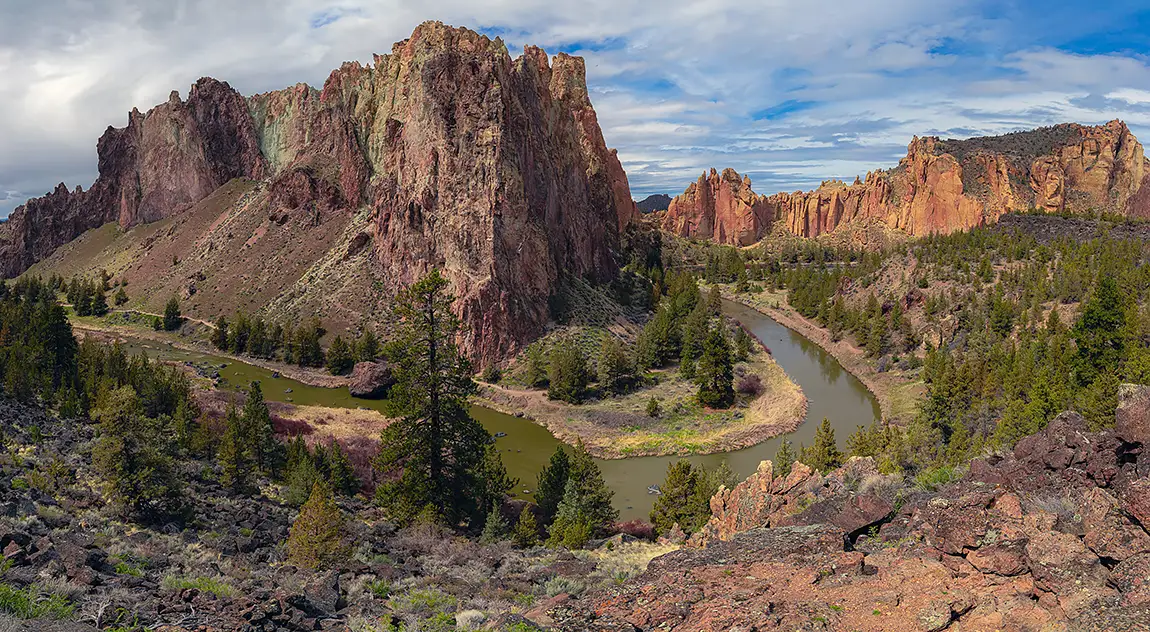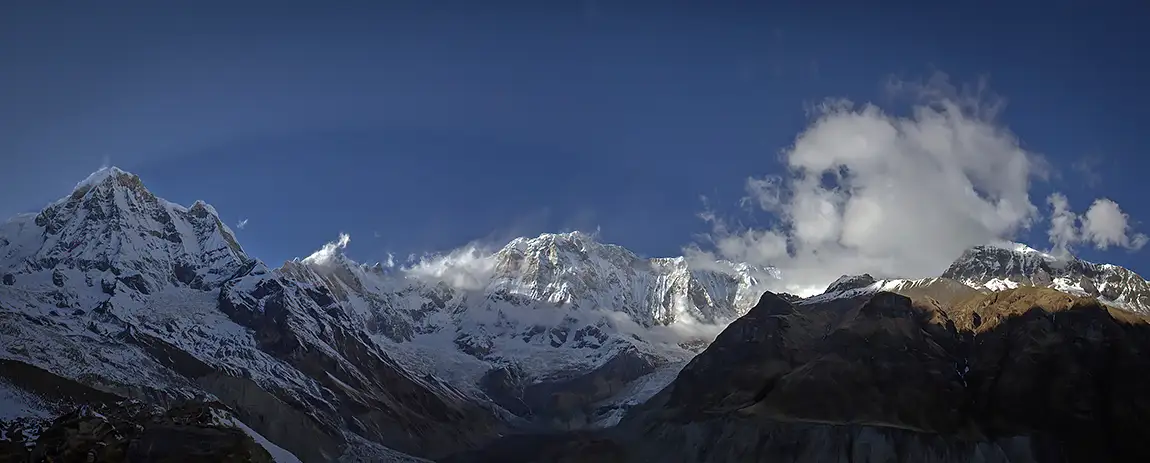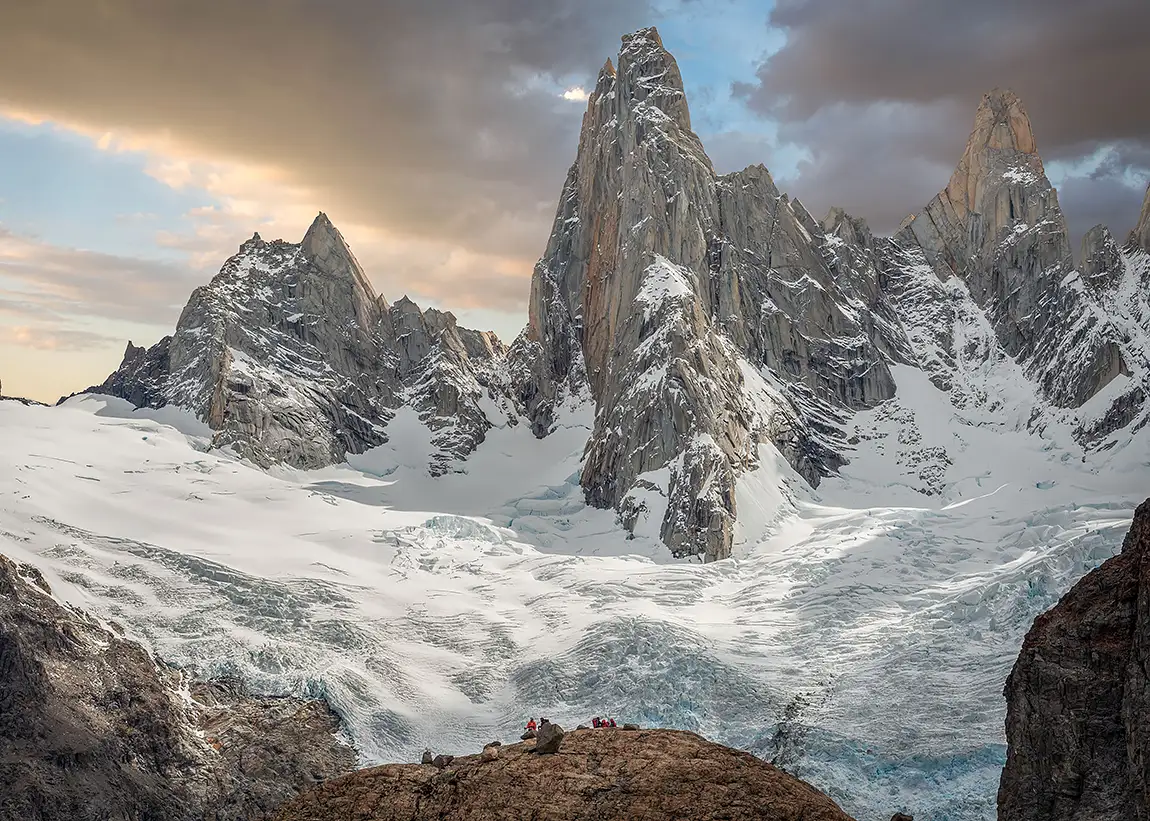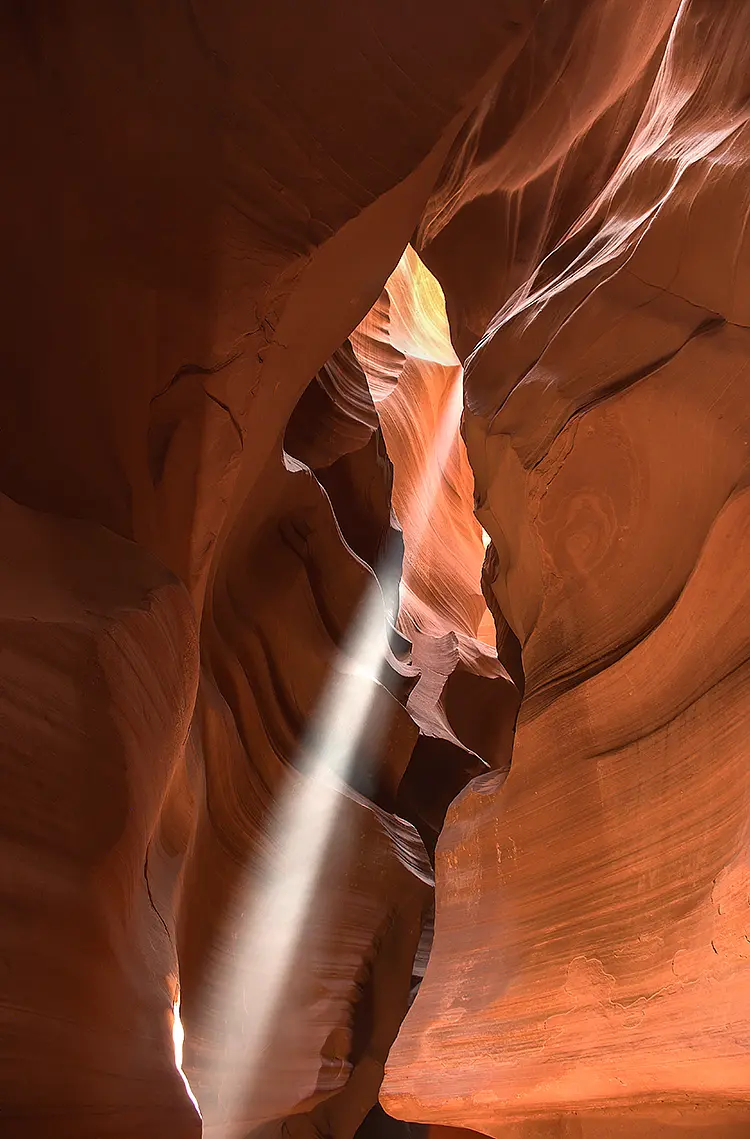The east side of the Great Salt Lake is struggling for its life. A combination of a 15-year drought, population growth, related development, and increasing water demands from farmers has put this ancient icon on the brink of crisis.
Much of the lake bed remains dry for much of the year, making it an intriguing location for photo walks. On this particular day, I was captivated by the scene. Under a beautiful July sunset, mud cracks formed in the rapidly drying clay of the lake bed, surrounding a phragmite grass that is attempting to take root in new territory. Each year, these phragmites inch further away from the eastern shoreline and into the parched lake bed.
The State of Utah is studying ways to control the aggressive spread of this grass, as it consumes valuable grazing land. Additionally, it is an extremely thirsty plant that drains fresh water that could be used for other purposes.



